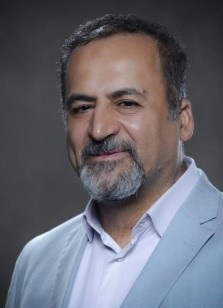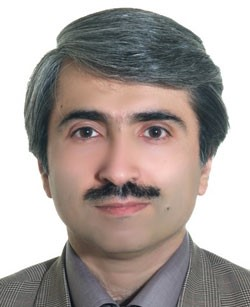1. Introduction
The imaging of hepatocellular carcinoma (HCC), as an interesting and challenging matter, plays a crucial role in its diagnosis as well as staging. A widespread variety of imaging modalities, including ultrasonography, computed tomography scanning (CT), magnetic resonance imaging (MRI), isotope scan, and PET are recently used in the evaluation of patients suffering HCC. Although the ultimate option for the treatment of these cases is hepatic resection and transplantation, only 20% of patients with HCC are surgically treatable. New developments in interventional therapies of patients not eligible for surgical treatment, such as trans-arterial chemoembolization (TACE), percutaneous ethanol injection (PEI), radio-frequency ablation (RFA), microwave coagulation, laser ablation or cryoablation, as well as acetic acid injection conducted us to find new methods. In achieving the early diagnosis of HCC, more accurate characterization, better evaluation of treatment response, and a deep understanding regarding the natural course and pathophysiology of HCC (1) is required.
HCC acts as the 5th most prevalent cancer worldwide with a poor prognosis; in addition, it is the 3rd most common cause of mortality due to malignancy (1). It also has a high prevalence in Asia where the hepatitis B infection is endemic. The most common risk factor for HCC in endemic regions such as Iran is the chronic hepatitis B virus (HBV) infection (1).
2. Methods
2.1. Ultrasound
Due to its safety, quick performance and low price, ultrasonography is considered as the first screening imaging modality for the depiction of liver (1). It is the method of choice for surveillance of patients with a high risk of developing HCC in most guidelines. However, the sensitivity and specificity of sonography is not acceptable in cirrhotic patients, and CT with contrast or MRI is indicated in high-risk cases (1).
2.2. Computed Tomography (CT)
Triphasic and quadriphonic CT images may be beneficial for the diagnosis of focal liver lesions and to assess patients who have high levels of α-fetoprotein with normal ultrasonography (1, 2). A CT-scan is also applied for the staging of HCC as well as follow-up of patients after surgical resection, RFA or PEI. Regenerative liver nodules are detectable on CT scans in 25% of the patients as hyperattenuating nodules (1). These regenerative nodules are usually iso-dense on CT with contrast and are not differentiable from the surrounding liver tissue.
In the cases that have performed trans-catheter arterial chemoembolization via Iodine-Based materials spectral CT has a suitable value for iodine-based material decomposition (3).
There are some studies that reported the accuracy of CT to identify the vascular structures of the liver (4).
2.3. Magnetic Resonance Imaging (MRI)
In the patients with non-diagnostic findings on CT or those patients in whom iodinated contrast agents are contraindicated, a MRI may be applicable. MRI is more reliable to CT for malignant T2 hyperintense lesions and the sensitivity of dynamic MRI is more than CT with contrast (84% vs. 47%); also, a MRI is more reliable than a CT for smaller lesions (1 - 2 cm in diameter) (5). MRI has more efficacy than CT for the management planning of patients (90% vs. 77% - 80% for decision making) (6). HCC patients have variable signal intensity on T1 images and majority of them have mild hyperintense signals on T2-weighted images. Contrast enhanced imaging is very helpful in the detection of most HCCs in the arterial phase and well-timed arterial phase imaging is crucial for depiction of HCCs in the course of dynamic MRI. Heavily T2 sequence helps us differentiate the solid from of cystic lesions and hemangioma. In addition to typical imaging hallmark of HCC including arterial hyperenhancement, portal /delayed washout, and capsule appearance some ancillary features can be evaluated with MRI sequences, which increase the likelihood of malignancy or benignity. Mild to moderate T2 hyperintensity, DWI restriction, intralesional fat, lesion iron sparing, mosaic architecture, low signal on hepatobiliary phase images, and corona enhancement are ancillary features favoring HCC. In the phase -opposed phase, sequences can be used for evaluation of intralesional fat or iron sparing.
2.4. Diffusion-Weighted MRI
Diffusion-weighted MR imaging (DWI) is a new technique that works according to intravoxel incoherent motion (IVIM) of water molecules among tissues using image contrasts by a short acquisition time.
DWI can supply noninvasive quantification of water diffusion and microcapillary blood perfusion with no contrast media.
For HCC cases, we can use DWI for the better detection of lesions, evaluation of tumor grade, response to the treatment, and tumor recurrence (7). Use of DWI in addition to conventional contrast enhanced MRI increase detection rate and accuracy of lesion characterization particularly for small lesions.
2.5. Liver-Specific MR Contrast Agents
The liver-specific contrast agents such as gadoxetic acid (Primovist; Bayer Healthcare, Berlin, Germany) and gadobenate dimeglumine (MultiHance; Bracco, Milan, Italy) are commercially available in the world (8). These agents could be taken up by normal hepatocytes and are excreted into the biliary system.
The role of these contrast agents is growing and being widely evaluated as a problem-solving material.
Contrast-enhanced MRI has high sensitivity for the diagnosis of HCC in cirrhosis that provides additional imaging features in the hepatobiliary phase taken 20 minutes after liver specific agent injection. Liver specific agents beside evaluation of lesion vascularity provide data about presence of functional hepatocytes in the lesion increasing accuracy of early HCC detection and characterization of atypical cirrhotic nodules as HCC, with reported accuracy of 95%-100%. Hepatobiliary phase hypointensity is reported to be most relevant ancillary feature in characterization of atypical early HCC (9).
2.6. Perfusion Imaging
Perfusion imaging modalities such as perfusion CT and DCE-MRI provide qualitative and quantitative information for changes in hepatic blood flow, which help to assess the hemodynamics of HCCs (8).
The principle of perfusion CT is according the temporal changes in tissue attenuation after intravenous administration of contrast media.
Using CT perfusion imaging, we can evaluate tumor assessment, characterization, and neoangiogenesis in HCC patients.
Analysis of the microcirculation using perfusion CT can be helpful for the assessment of response to treatment, especially to anti-angiogenic drugs. Increased radiation and lower resolution are some limitations of perfusion CT, which may be reduced by low-dose CT protocols (8).
2.7. Elastography
Elastography is a recently advanced technique that quantitatively evaluates the stiffness of the tissue using detecting the wave propagation velocity by ultrasonography (USE) or MRI (MRE).
USE is a technique for the evaluation of tissue stiffness and shear wave elasticity imaging has been introduced for use in deep organs like the liver. Therefore, USE is a promising non-invasive marker for the assessment of liver fibrosis and could be used as an alternative technique for biopsy.
MR elastography (MRE) is a non-invasive technique for the measurement of the viscoelastic properties of the tissues and could be useful in the differentiation of malignant tumors from benign types. Malignant hepatic lesions including HCC show greater mean shear stiffness than benign tumors. More studies are needed to assess the possible applications of elastography for the diagnosis and follow-up of HCC (8, 10).
3. Summary
Imaging techniques are continuously evolving in the diagnosis of HCC and we have a large number of dedicated imaging modalities for HCC.
Using a combination of the information derived from multiparametric imaging; such as perfusion imaging, diffusion imaging, and stiffness imaging combined with liver specific contrast media, we can gain more detailed information about the biology of the HCC.

